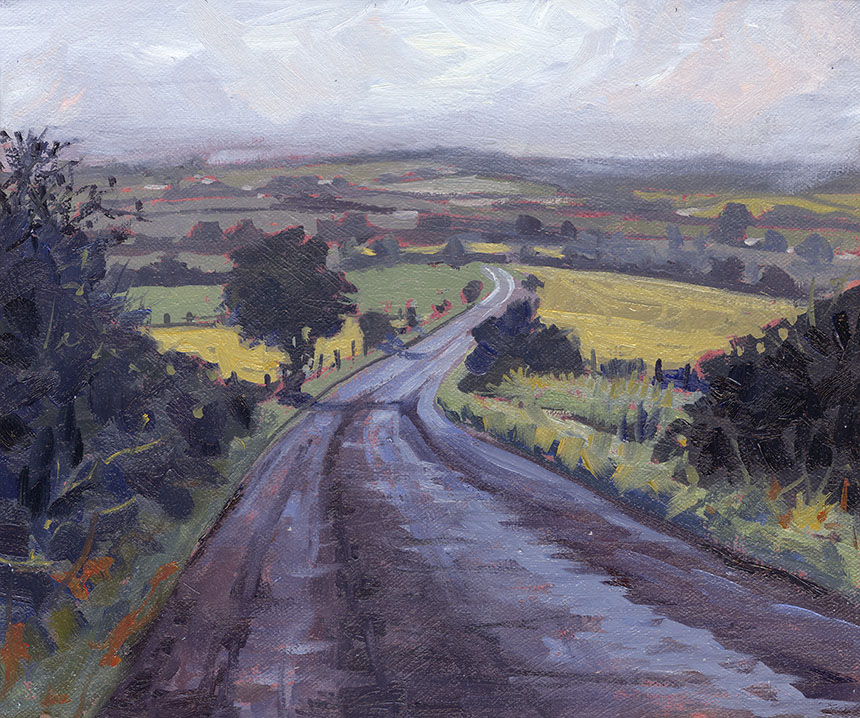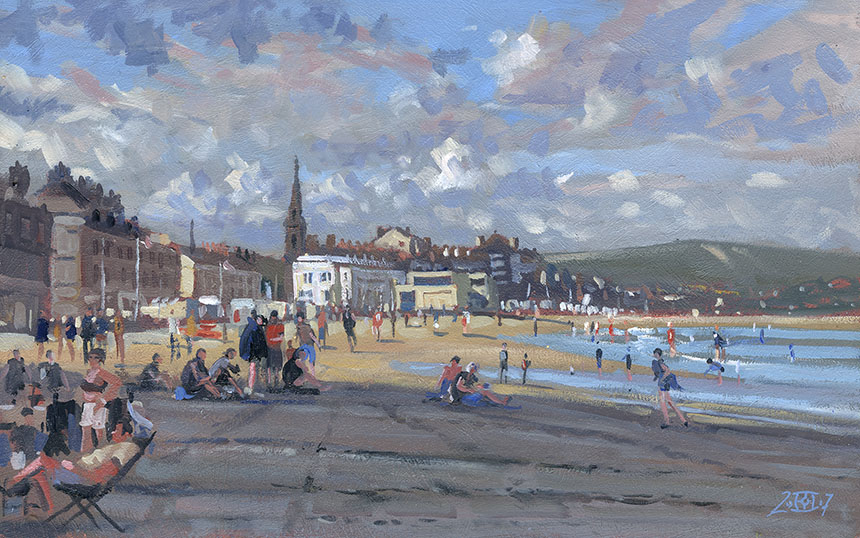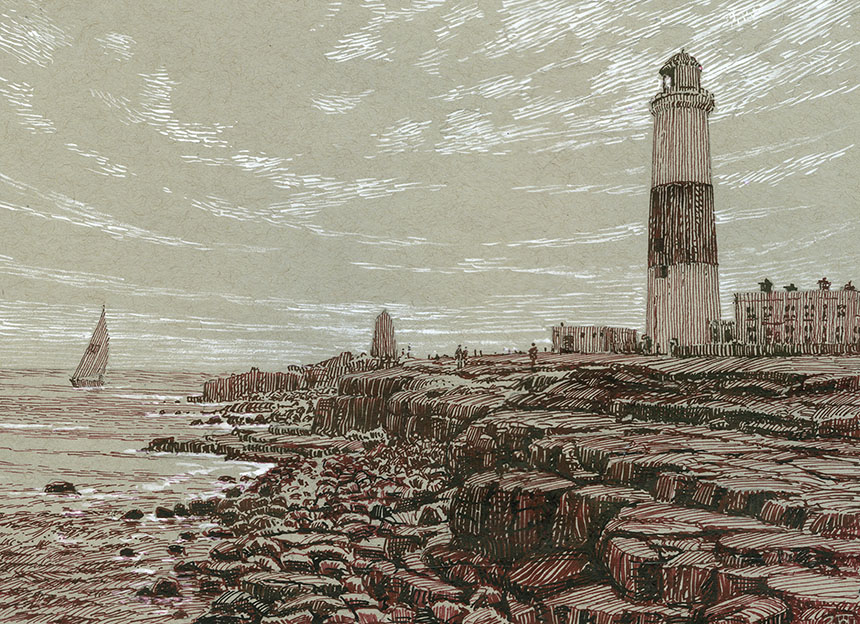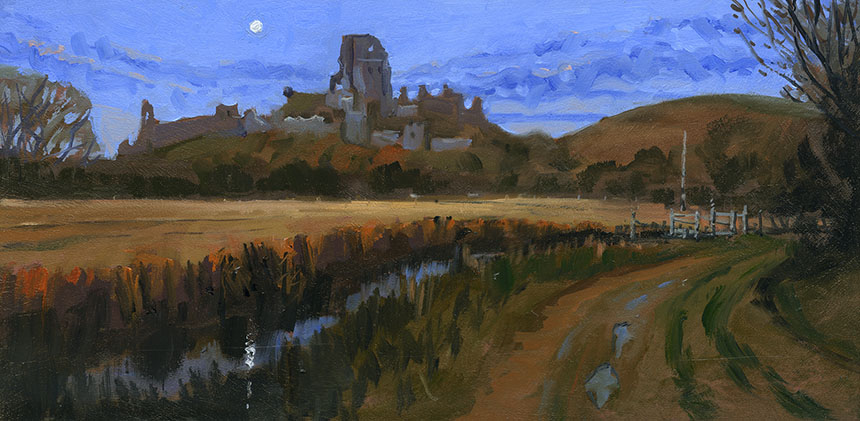Failing. We all do it. Even the painters you admire do it. Even the old masters and new masters and current masters do it. We don’t talk about it much though. Most artists tend to edit their published output to remove the abject stinkers, the dubious dullards and the truly dismal daubs. Maybe they hope you might think they don’t ever do them. Mostly though, I suppose, it is just normal and natural to attempt to show yourself in as good a light as possible. Of course it all falls apart when you accidentally post a stinker in a moment of post painting delusion. Next day you look to your triumph on Arsebook and realise you have let loose a turkey on the world rather than a triumph… Fortunately social media quickly banishes anything that is embarrassingly bad to the oblivion of, “far too far in the past to scroll down to.”
I think you should welcome failure though. Without well and truly tanking you wouldn’t fully appreciate the times you get it right or half right. If your work was really one success after another it would soon get so dull that getting out of bed in the first place would be to dreary to contemplate. Failure feeds the hunger to succeed. Without that spicy scent of all too possible self humiliation it is hardly worth putting brush to board!
Most painting pundits, including me, harp on about practice and honing your skill until the readers yawn. What you should be developing and honing is of course your mindless optimism that the upcoming session of paint splish-splashery will produce at least a masterbit, if not a full on masterpiece. Without that delusional belief that the dam will break, the run of stinkers will end and the worm will finally turn up trumps we would never start in the first place.
Every successful painting though is built upon the sturdy groundwork of the previous compositional crud, tonal tragedies and colour cataclysms that stud one’s career. To do one decent painting you must paint a shedload (or attic full in my case) of mediocrity and worse… as I say to people who hear me play the flute, “It’s taken a lot of practice to get this bad…”
Something to work on in the failing arena is coming back for more. If something ends in humiliating defeat then pick yourself up (after a good old wail and curse) and go at it again. You will be amazed by how often you can trump a tragedy with a triumph. Many duff paintings after all are duff because you got over-confident and slipshod. There is nothing like a train wreck to make you concentrate properly. I should really document all my own, not only missed the bull but didn’t even hit the board, moments but I tend to wipe them off if in oils or tear them up if in watercolour. I am not going to stop doing that however as the act is extremely cathartic and helps me start another one immediately!
So when the elegant swan you were hoping for turns into a dead ugly duckling don’t despair. Think of the Phoenix rising from the ashes and how much sweeter the triumph of a half decent daub will feel if it is well garnished with epic fails. Whatever you do though don’t deny your failures or that may well hold back progress. Perhaps don’t admit them to all and sundry, but even if you keep them secret from others admit them to yourself. Art is after all being honest with yourself whilst lying to others.
Tricky to know what to post after that… was vaguely tempted to post a spread of missed marks, but I will just do my usual mix of hits and misses.
A rare chance to do a portrait sketch. Only an hours worth but great fun and so, so difficult. I think to do a really good portrait it takes several sessions with the painting going through several “ugly” phases. Likenesses are so hit and miss that you just have to take the risk of destroying something that is just OK to try and get something that really catches the person. Oils A4 ish.
This an example of coming back for more after a failure. The previous picture was beyond bad and I wiped it off. The light was rapidly going so immediately I turned and did this. Not anything that will ever go in a frame but at least something that captures a fraction of how the place felt. So you go home feeling the effort was worth it. Oils 10in by 7in.
A wet day at the Milton Abbey. An exercise in trying to hint at the architecture rather than over explain it. I sometimes like to revel in the mad complexity of buildings but here the main thing was the mood of the day so I tried to throttle back the detail in the buildings. 16in by 10in Oils.
The rain really set in after doing the Abbey and I got soaked doing this on the way home. Because I was keeping my umbrella over my painting the rain ran down my neck and all the way down to my socks… This is the view down towards Okeford Fitzpaine from Okeford hill and a view I have had my eye on for a while. In clear weather there is a tremendous panorama across the Blackmore Vale which is wonderful but somehow too much. With the rain and the murk obscuring things it looked much more paintable. 12in by 10in Oils.
A day out painting in Weymouth. I couldn’t resist doing a widish view though I would have probably been better finding a more intimate corner. This nearly got wiped off as it looked sort of dull and dreary. Once home though I could see I had the sky a couple of notches too dark in tone. As soon as I changed that the whole mood of the picture was transformed. I will overglaze the land and buildings once it is dry which will improve it further I hope. 14in by 10in, Oils.
Off to the beach next. I love the old fashioned seaside feel of Weymouth especially on a sunny day when the beach was thronged. I loved the silhouette of the buildings so painted up the beach rather than down. Odd that you assume the sea is there even though it is out of sight! Quite a tricky subject and I had to move the figures about as I didn’t want any of them to specifically draw too much attention. 10in by 11in Oils.
Last one from Weymouth. As I was walking down the beach a cloud shadowed the distant hills and the foreground beach leaving a slash of light across the middle. I sat down to paint in the hope of it happening again. With that in mind I toshed in the foreground with a shadowy tone ready for the right moment… which never came! So I had to do the foreground at home later. Fortunately I had a couple of snaps of the light effect from earlier that gave me a rough idea. 16in by 10in Oils.
I drawing from a while ago. I did this as a sketch for an oil painting of Portland Bill but got a bit carried away. A4 pen and body colour.
 Sticking to the Weymouth theme another drawing done on a previous visit I forgot to post. I have this new grey toned pad from Strathmore which I quite like as it is a tad darker than the Turner Blue paper I usually use. The downside is that it is not as tough and you have to be a bit careful not to tear the surface with the pen. Also it doesn’t take washes very well so the white has to be hatched in. A4 Pen and Ink with white.
Sticking to the Weymouth theme another drawing done on a previous visit I forgot to post. I have this new grey toned pad from Strathmore which I quite like as it is a tad darker than the Turner Blue paper I usually use. The downside is that it is not as tough and you have to be a bit careful not to tear the surface with the pen. Also it doesn’t take washes very well so the white has to be hatched in. A4 Pen and Ink with white.


















